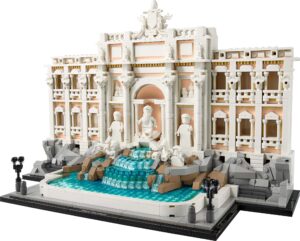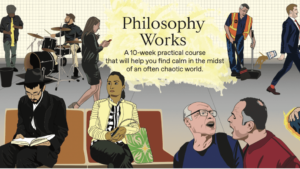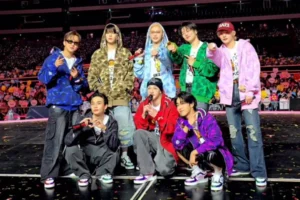Ivan Navarro’s art exists in the unsettling space between visual seduction and psychological confrontation. Known for his deft use of light, mirrors, and industrial materials, Navarro transforms minimalist form into conceptual protest. His 2010 work, “Kick (Vintage Grey),” exemplifies this synthesis—an arresting sculpture that folds politics, architecture, and existential tension into a compact yet infinite object. Exhibited by Galerie Templon and still resonating fifteen years later, the piece continues to radiate questions rather than answers.
In an era increasingly shaped by surveillance, digital illusion, and ideological erasure, Navarro’s light-based sculptures remain chillingly relevant. Kick (Vintage Grey) is not merely a mirror trick or a formal experiment. It is an abyss you enter with your eyes—only to exit with your conscience provoked.
Form and Function: Aesthetic Infrastructure
At first glance, Kick (Vintage Grey) appears deceptively straightforward. The sculpture consists of a vintage metal locker door—industrial, utilitarian, and heavy with institutional connotation—retrofitted with interior mirrors and neon lights arranged in a receding geometric sequence. The piece gives the illusion of infinite depth through mirrored reflections, creating a visual tunnel that suggests both possibility and confinement.
The “kick” in the title references the base of the locker, which in institutional architecture is known as a “kick plate”—a functional detail meant to withstand repeated contact. Yet Navarro’s piece flips this mundane reference into something metaphysical. In Kick, the kicked object is no longer grounded. It has become a portal.
The use of the color “vintage grey” amplifies the sculpture’s institutional allusions: public schools, locker rooms, prisons. Navarro’s palette is never accidental. Grey, here, is more than a neutral tone—it’s the color of bureaucratic anonymity, of lost identity within systems. The mirror and neon seduce the viewer, while the locker frame anchors the work in the grim materiality of social architecture.
Mirrors, Repetition, and the Politics of Light
Navarro’s manipulation of reflection and repetition draws from the legacies of both minimalism and kinetic art, yet his purpose diverges. While artists like Dan Flavin explored light as spatial intervention, Navarro uses it as psychic inquiry. His infinite mirror constructions do not create meditative serenity; they fabricate visual unease. Looking into Kick is like peering into a void that refuses to be empty. The viewer confronts not transcendence, but entrapment.
The repetition of light forms—flanked and multiplied by mirrors—evokes both the illusion of freedom and the architecture of control. Like a hallway in a detention center, it extends endlessly yet leads nowhere. This is Navarro’s conceptual sleight of hand: he uses seductive aesthetics to draw attention to spaces built to dehumanize.
The work references Chile’s Pinochet-era detention centers, a haunting legacy Navarro often mines in his art. Born in Santiago in 1972, Navarro grew up under military dictatorship. His father, a teacher and activist, was imprisoned and tortured. Kick becomes, in this context, not just a formal exercise but a monument to invisible histories—a structure made of the very materials once complicit in silencing dissent.
Art as Resistance: The Spectacle of Containment
To understand Kick is to grapple with Navarro’s broader project: turning minimalist sculpture into socio-political resistance. The work’s subtle aggression lies in its ability to aestheticize the apparatus of control while simultaneously undermining it. It is sculpture as resistance, as witness, as ghost.
Unlike overtly didactic political art, Navarro’s power lies in ambiguity. There is no clear villain in Kick, no single interpretation imposed. Instead, he creates a trap of meanings. The viewer is seduced by form, only to discover the conceptual steel beneath.
In 2025, amid continued reckonings with systemic inequality, mass incarceration, and state surveillance, Kick resonates louder. It confronts viewers with a question: What systems do you unconsciously participate in? And what does it mean to find beauty within structures designed to contain you?
From Chile to Chelsea: The Transnational Language of Minimalism
Navarro’s career reflects a tension between geography and aesthetic lineage. Though Chilean by birth and deeply informed by Latin America’s political history, Navarro’s artistic grammar is fluent in the language of American minimalism. He studied in New York and exhibited globally, adopting and subverting the stylistic cues of Donald Judd, Bruce Nauman, and Dan Graham.
Yet unlike these predecessors, Navarro injects his minimalist structures with narrative, biography, and critique. In Kick, the discipline of minimalist form is haunted by lived trauma. The hard edge is softened by memory. The industrial is repurposed as testimonial. This is not minimalism for its own sake—it is minimalism with moral gravity.
The locker, for example, is not just a formal shell. It is a cipher for institutional memory. School. Prison. Factory. Gym. As viewers, we bring our own associations to it, shaped by class, race, and geography. Navarro knows this. He builds sculpture that contains both the personal and the public.
Light as Violence, Light as Memory
In Kick, light does not illuminate. It interrogates. It surveils. The neon tubes—pulsing silently within their mirrored chamber—recall emergency lighting, police strobes, or the harsh fluorescence of interrogation rooms. Light, in Navarro’s work, is not soft or redemptive. It is confrontational. It asks: what do you see, and what do you choose to ignore?
Yet, paradoxically, light is also memory. Navarro uses the medium to reflect upon lost spaces and forgotten names. The infinite regress of mirrored light becomes a metaphor for the persistence of trauma—a wound that cannot be cauterized, a room that cannot be left. Each flicker is a name unspoken. Each reflection, a history erased.
This double bind—light as both trauma and testimony—marks Kick as a deeply psychological work. It is less about what it shows and more about how it makes us feel. Navarro does not provide answers. He builds spaces that reflect our own entanglements with power, perception, and complicity.
Sculptural Ritual: The Viewer as Participant
Crucially, Navarro’s sculptures demand interaction. One cannot simply observe Kick—one must confront it. Stand before it. Lean in. Peer into the seemingly endless tunnel. This interactivity transforms the viewer from passive consumer to implicated witness.
This participatory dimension recalls the architectural theories of Michel Foucault, particularly his writings on the Panopticon—the prison design that relies on the possibility of constant observation to enforce discipline. In Kick, the viewer becomes both observer and observed. Your own reflection stares back from the infinite corridor. You become part of the spectacle you are trying to decipher.
And this, perhaps, is Navarro’s greatest coup: he implicates the viewer in the systems the sculpture critiques. You are not outside the locker. You are in it.
Longevity and Relevance: Kick in 2025 and Beyond
Fifteen years after its creation, Kick (Vintage Grey) has only deepened in urgency. In 2025, the sculpture feels less like an artifact and more like a warning. As carceral aesthetics continue to infiltrate public architecture, as data mirrors track our every keystroke, as governments and corporations use illusion as a tool of power, Navarro’s visual language feels prescient.
The piece now lives in critical retrospectives and permanent collections, yet it refuses to be pacified. It remains provocative. Visually magnetic, conceptually unforgiving. A monument to the complexity of survival.
In many ways, Kick serves as a cipher for Navarro’s entire practice: a collision between form and fear, memory and mirror, seduction and indictment. He invites us to look—then ensures we cannot look away.
Navarro’s Echo Chamber of Truth
Kick (Vintage Grey) is more than a sculpture. It is an encounter. With history. With power. With the self. Ivan Navarro, through light and steel, constructs not a monument to certainty but a theater of doubt. His use of mirrored infinity does not offer escape—it compels return.
In Navarro’s hands, even the most mundane materials—lockers, bulbs, glass—become vessels for resistance and reflection. The grey of Kick is not neutral. It is the color of forgetting, disguised as order. Through this color, and through the illusion of endlessness, Navarro stages a reckoning.
Standing before Kick is to stand at the edge of memory and modernity, silence and subversion. And it is to be reminded that in every structure, no matter how mundane, a message lies hidden. If we dare to look closely, we may just find ourselves staring back.
No comments yet.








